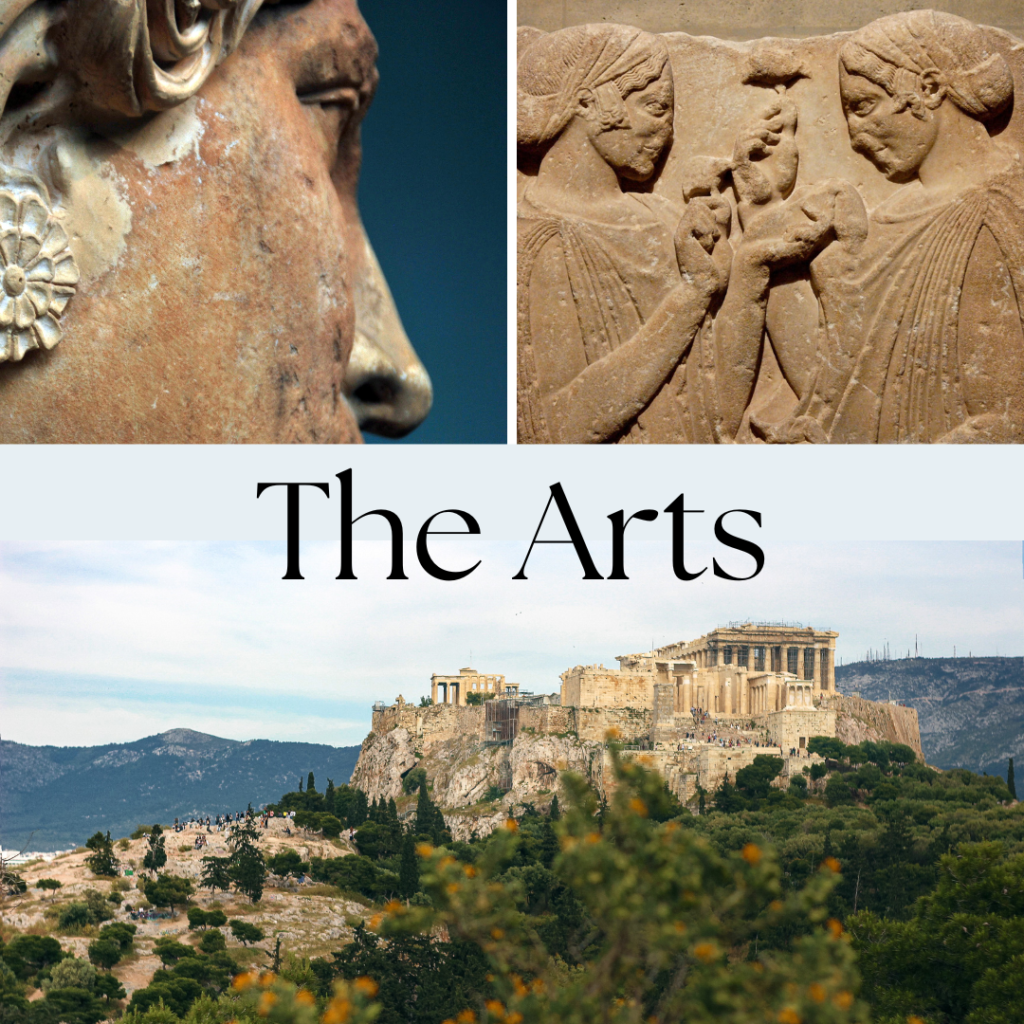
The Ancient Greeks adored Classical Beauty. Some of the most incredible sculptures and architecture were created by them, at least 2000 years ago.
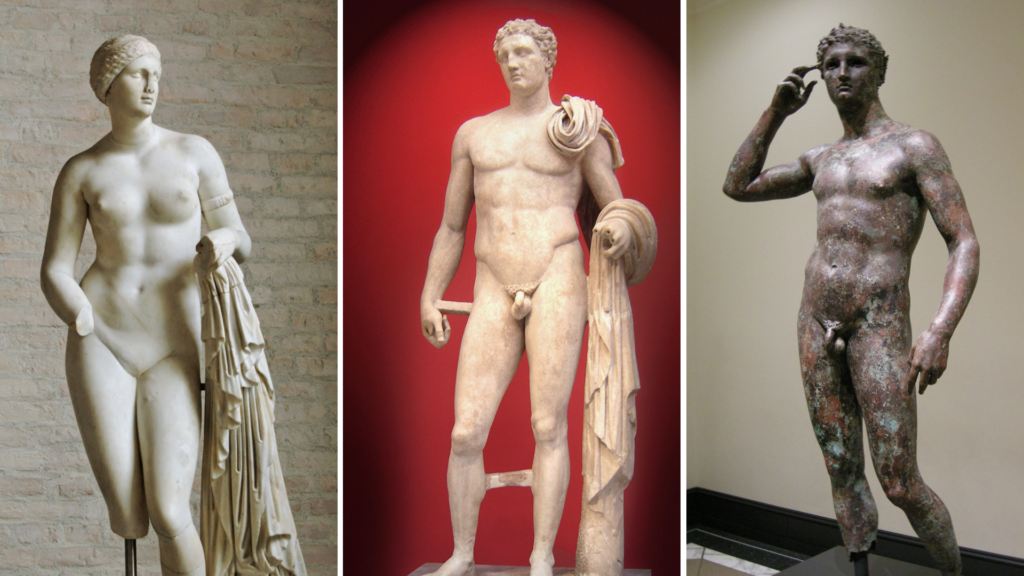
But the ideal of classical beauty, that inspired Ancient Greek sculpture, has resurfaced in several of the more recent eras of art history.
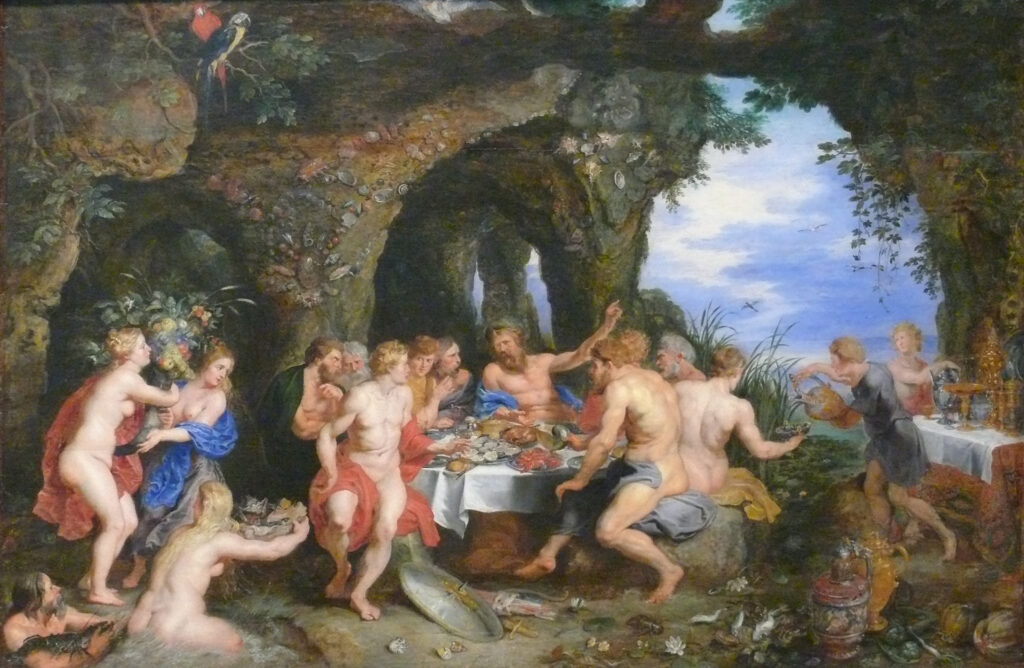
The Feast of Acheloüs – Painted by Peter Paul Rubens in ca.
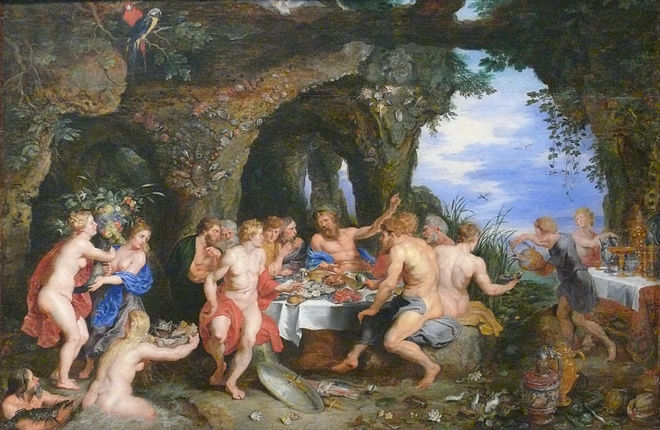
“The Feast of “The Feast of Acheloüs.” The Met.” Painted by Peter Paul Rubens and Jan Brueghel in ca. 1610 – Flemish
“Rubens and his friend Jan Brueghel collaborated on a number of mythological and religious pictures about 1610–20. In this panel, Rubens designed and painted the figure groups and Brueghel painted everything else. The river god Acheloüs explains to the Greek hero Theseus that his former lover Perimele was transformed into a distant island by Neptune so that she could remain forever within the river’s embrace. The artists combined Latin learning, athletic nudes (some based on classical sculpture), the wonders of nature, and the wonders of technique into an encyclopedic display meant for a sophisticated collector.” The Met
“The Feast of Acheloüs.” The Met, www.metmuseum.org/art/collection/search/437525. Accessed 4 Sept. 2022.
Acheloüs was the Ancient Greek god of fresh water and rivers.
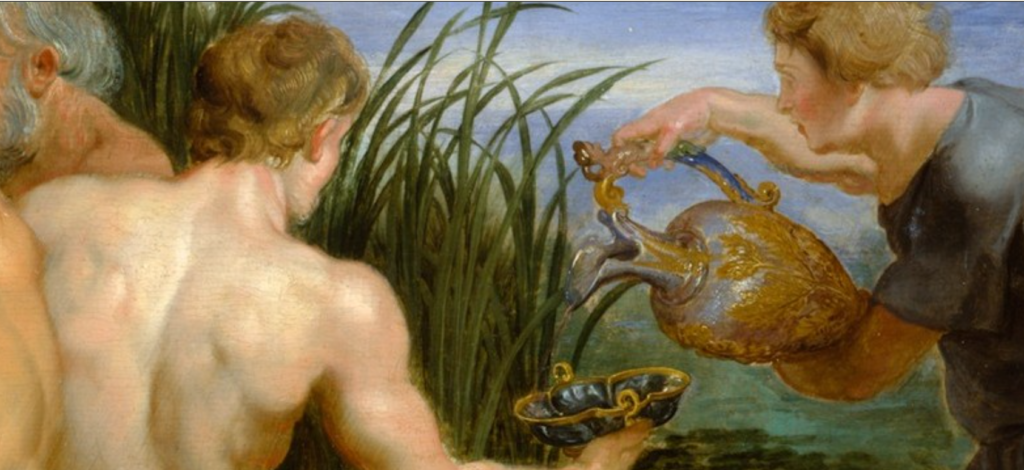
Detail: Shows the Lake behind the feast. This detail also shows that wine is being poured into a seashell.
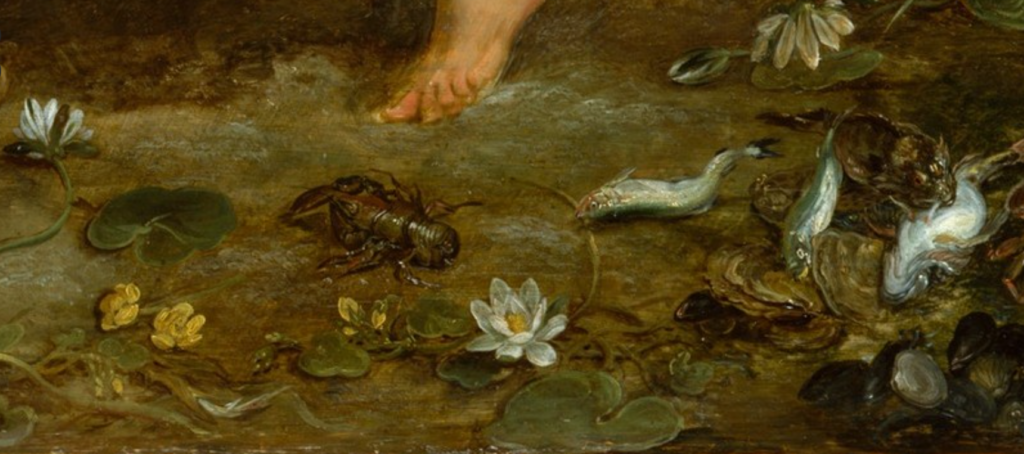
Detail 2 – Fish, Water Lilies, and Other Sea Creatures have washed up near the table where the guests are being served.
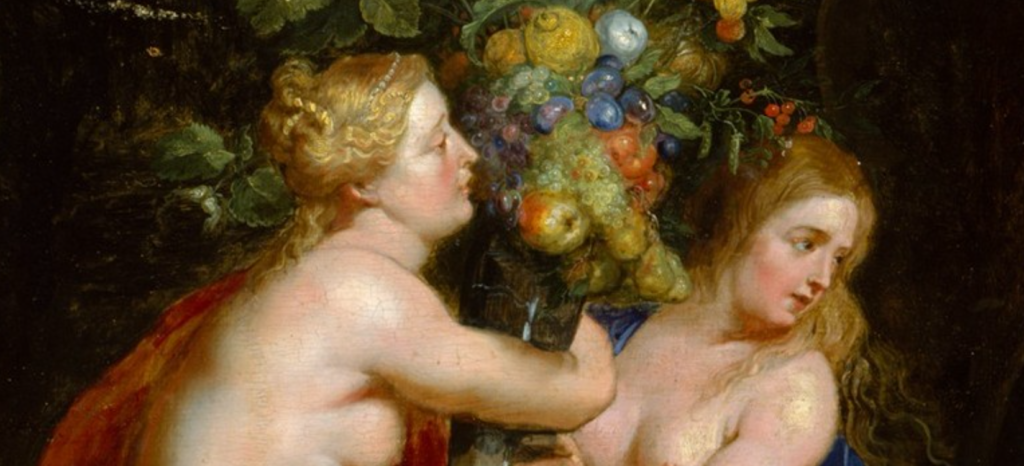
Detail 3 Females–Probably Nymphs
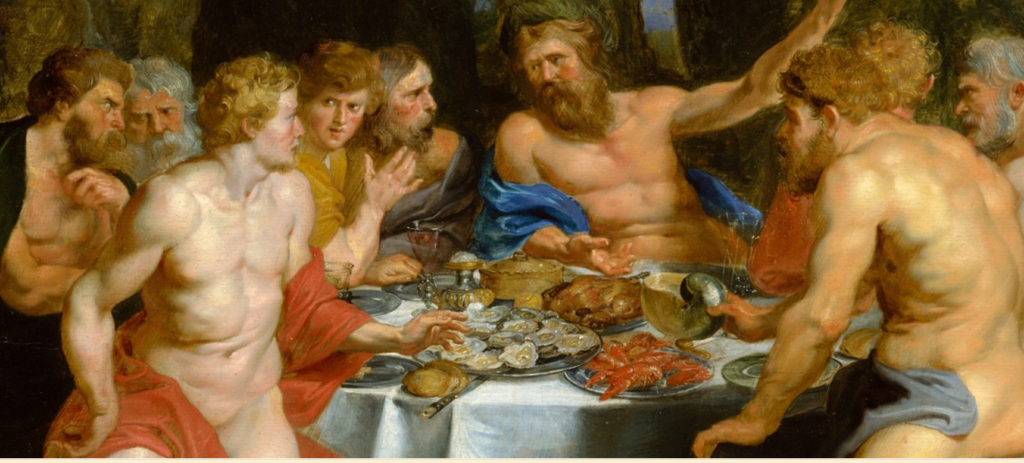
Detail 4 – Storytelling through Paintings – Notice that Acheloüs is serving his guest bounty from the water. Also, notice how very well Rubens has captured the story that might have been taking place at this feast. Rubens has a masterful painter of people. Almost 2,000 years after the fact, he has captured the spirit of a slice of Ancient Greek life.
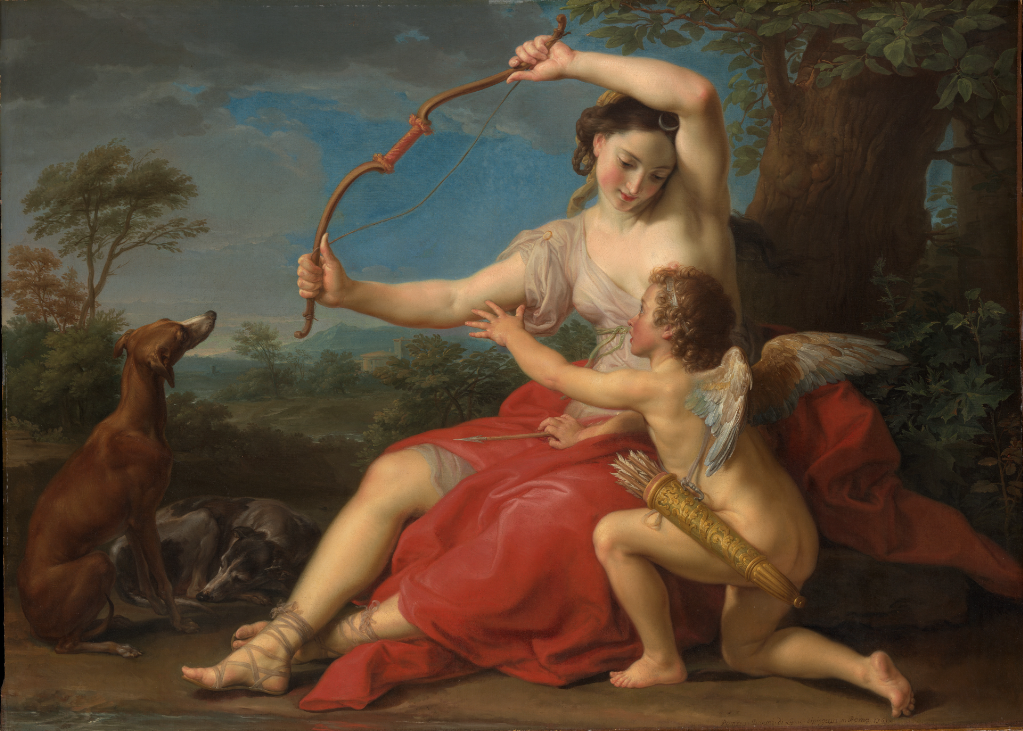
Diana and Cupid Painted by Pomeo Batoni at the Metropolitan Museum of Art 1761
“Diana and Cupid.” The Metropolitan Museum of Art, www.metmuseum.org/art/collection/search/435622. Accessed 4 Sept. 2022.
“The painting was executed for Sir Humphrey Morice (1723–1785), son of a wealthy merchant and director of the Bank of England. Morice was a great animal lover and commissioned from Batoni a portrait of himself reclining in the Roman countryside after the hunt as a pendant to this canvas, which shows the goddess of the hunt withholding the bow from Cupid. Although full of extraordinary warmth and feeling, the figure of Diana is based on a celebrated ancient statue of the sleeping Ariadne in the Vatican. The painting may have been conceived as Batoni’s response to his rival, Anton Raphael Mengs, who championed the Neoclassical style.” The Met
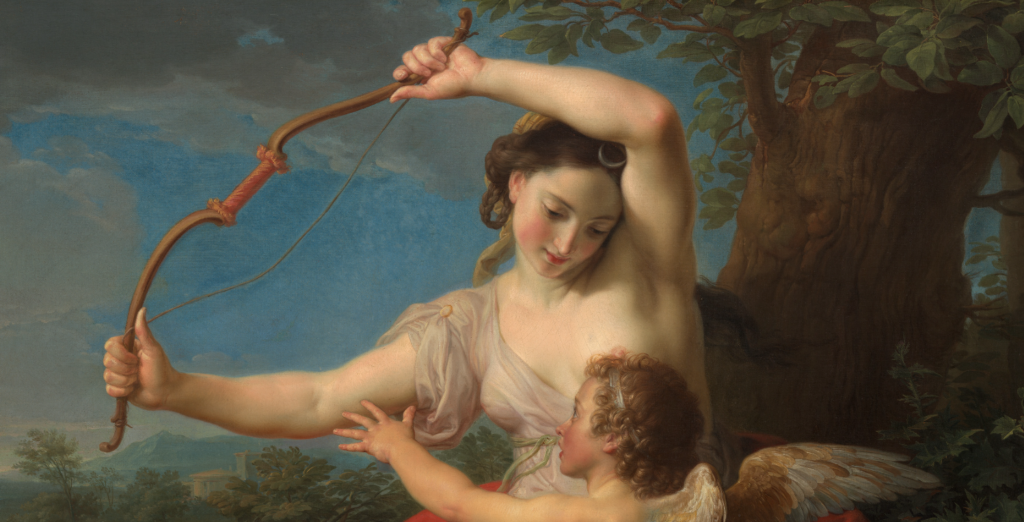
In Ancient Greek Mythology, Artemis was the name of the goddess who was called Diana in Ancient Rome. Artemis was the goddess of the hunt. She is usually depicted as holding a bow and arrows. In this painting, Artemis has the bow, but Cupid [called Eos in Ancient Greece[ has the quiver of arrows.
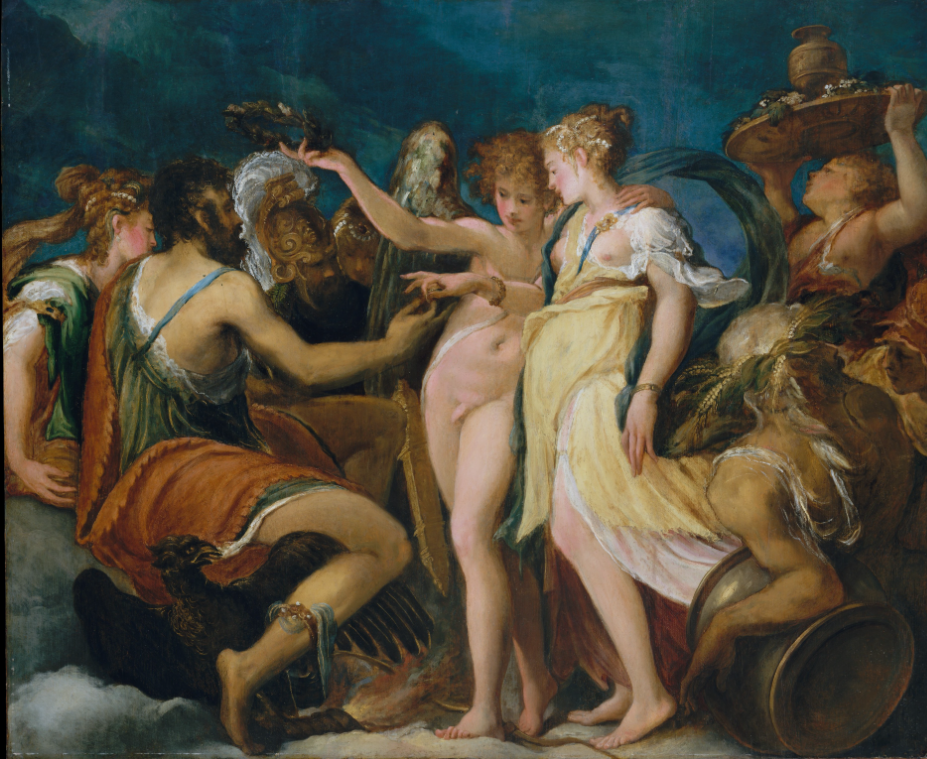
The Marriage of Cupid and Psyche – Painted by Andrea Schiavone (Andrea Meldola) in ca. 1540
“The Marriage of Cupid and Psyche.” The Metropolitan Museum of Art, www.metmuseum.org/art/collection/search/437638. Accessed 4 Sept. 2022.
In Ancient Greek Mythology, Cupid was Eros.
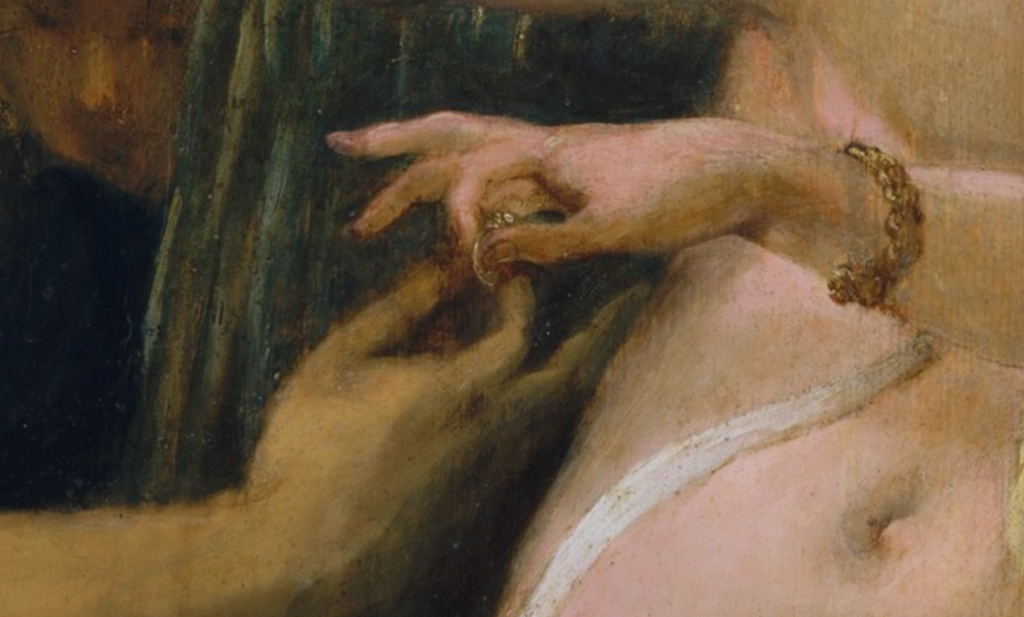
Detail: The painter is calling attention to the fact that the Ancient Greeks honored marriage. In fact, most of the gods and goddesses married. They were often unfaithful, but they did marry.
“The painting represents the marriage of Cupid, the son of Venus, with the mortal Psyche, in the presence of Juno, Jupiter, Mars, and other gods of Olympus as narrated by second-century Latin author Apuleius in The Golden Ass. Originally an octagon (the four corners are additions), it was the central panel of a ceiling with scenes from the legend of Psyche installed in the Castello di Salvatore di Collalto, in the hills to the north of Venice, in about 1550. Schiavone’s fluid and painterly style and the exaggerated proportions of his figures were inspired by Parmigianino and were in turn important to a younger generation of Venetian painters such as Tintoretto.”
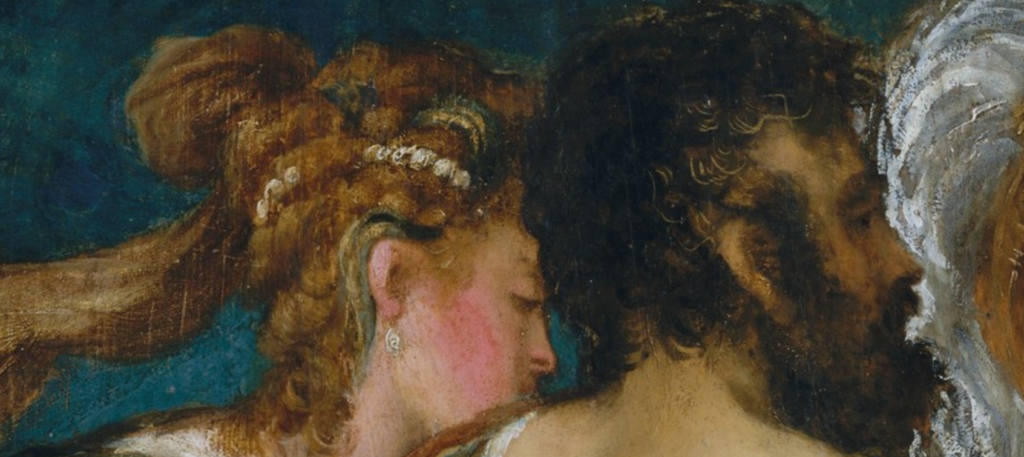
In Ancient Greek Mythology, Hera was the goddess of marriage, and the painter placed her in this painting, too. She seems to be coaching Cupid.
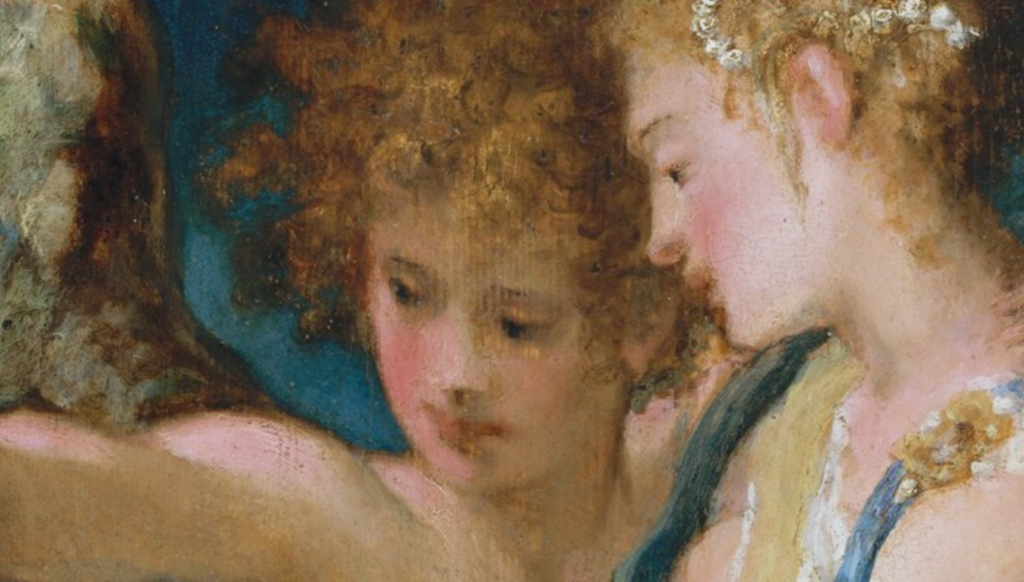
Zeus was the supreme god of the Ancient Greeks, and he is officiating the wedding. Eros is the boyish figure with curly red hair, and Psyche is the mortal that he married. The story of Cupid and Psyche has been repeated numerous times, and it has inspired numerous otjer works of art.

Cupid and Psyche Sculpted by Antonio Canova in 1794
“Cupid and Psyche.” The Met, www.metmuseum.org/art/collection/search/188954. Accessed 4 Sept. 2022.
“Canova made two slightly different versions of this composition. The first, commissioned by a Briton, was later acquired by Napoleon’s brother-in-law and is now in the Musée du Louvre, Paris. The second, for which this full-scale model was prepared, was made for Prince Nicholas Youssoupov and is now in the Hermitage, Saint Petersburg. The plaster was inherited by Canova’s assistant, Adamo Tadolini, who used it to replicate additional groups. The metal pins inserted over the surface assisted the sculptor in transferring the form of the complex group from the plaster to the block of marble from which the sculpture was carved.”
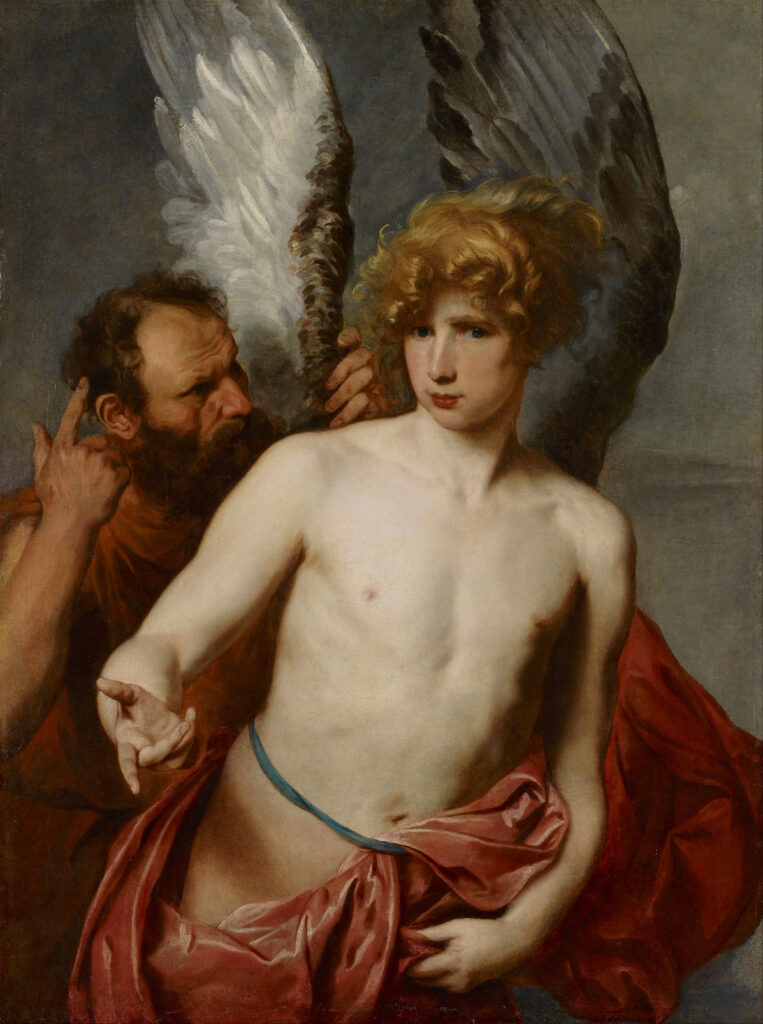
Daedalus and Icharus Painted by Anthony van Dyck (1599–1641)
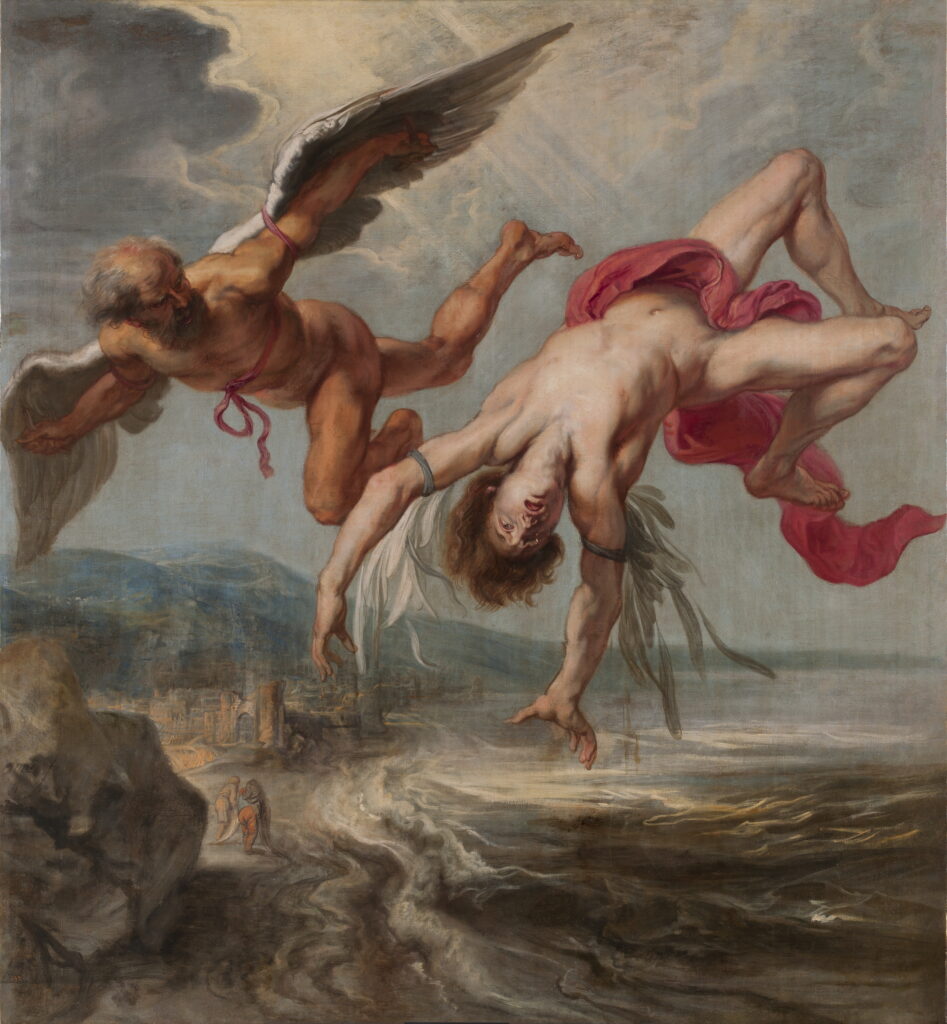
The Flight of Icharus by Jacob Peter Gowy Painted ca. 1635-37.
Torre de la Parada – https://www.museodelprado
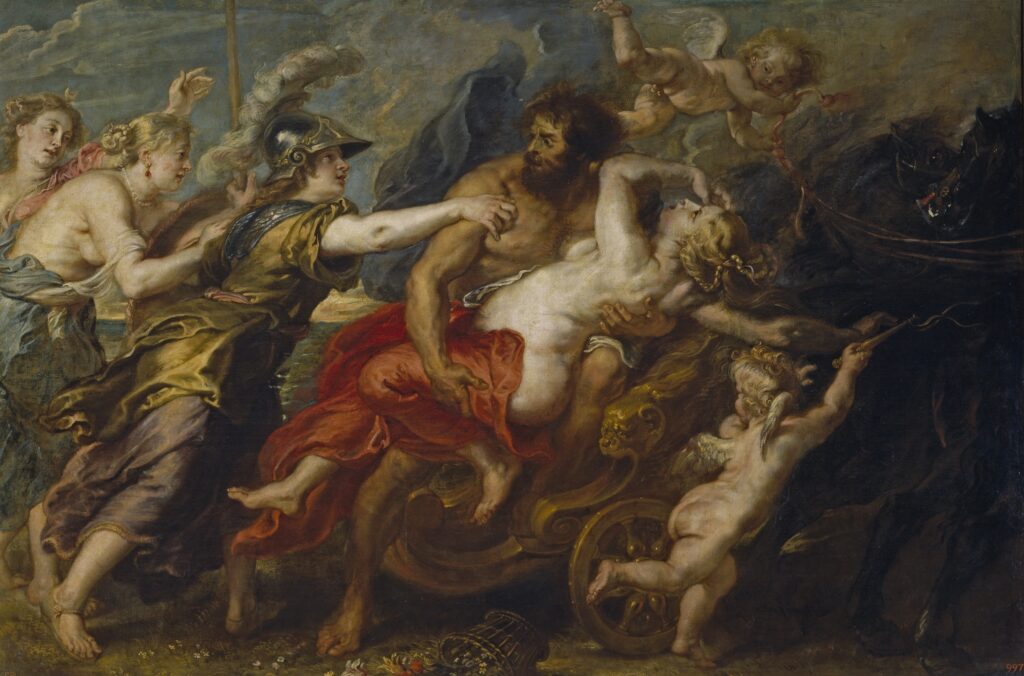
The Rape of Persephone by Peter Paul Rubens – Painted between 1636 and 1638.